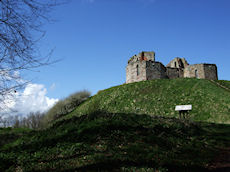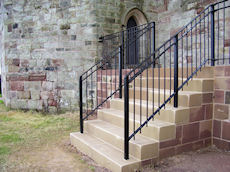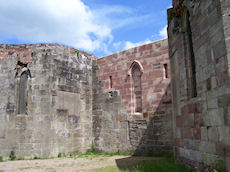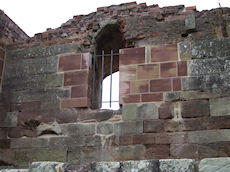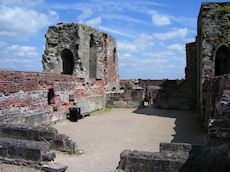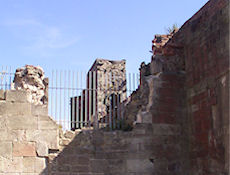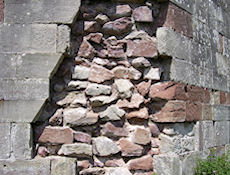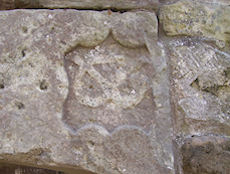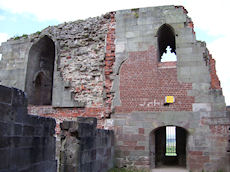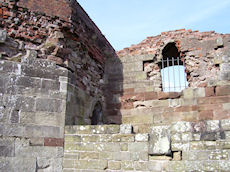Stafford Castle

The site commonly known as Stafford Castle was once home to a substantial Norman fort of motte and bailey design. Originally constructed around the 1080s by Robert de Toeni (de Tosny) in response to the unrest of the local people. The site became the seat of the Stafford family.
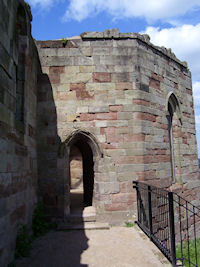
Constructed almost entirely of earth and timber, the motte and bailey rambled across several large earthen plateaux and was protected by a series of ditches and palisades. The earthworks were very large, most modern publications credit the Normans for the bulk of the earthwork, but some people have speculated there was an older settlement on the site. During the late 1970s and much of the 1980s, several archaeological excavations revealed a much more accurate plan of the Norman layout and new information plus a few interesting artifacts were discovered.
Little is known about the Stafford Castle site during the 12th and 13th centuries. In 1348 John of Bicester was commissioned by Ralph Stafford to construct a stone castle on the former Norman site, the layout of which would be recognisable by most Staffordians, although this is not the castle we see on the site today.
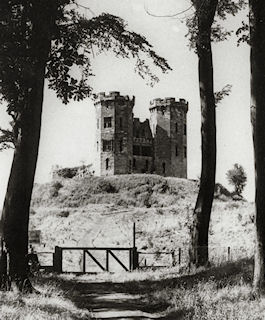
In 1643, Lady Isabel Stafford briefly held her ground at Stafford Castle against the be-sieging Parliamentary forces, but upon falling the destruction of the then ruined castle was ordered.
In 1813, Edward Jerningham, the then owner of the estate, commissioned a new castle to be constructed upon the foundations of the earlier 14th century castle. It appeared to match the exact dimensions of the earlier castle but did not include the fifth tower (the original medieval 5th tower was a late addition to the 14th century construction). The ruins of this folly castle are what remain visible today.
20th century Stafford Castle
Despite what other sources would have you believe, there are no remains of the Norman fort within the stonework that currently remains. The castle does indeed sit aloft the foundations of the 14th century castle and appears to be of the exact same proportions. A combination of red brick interior workings clad with sandstone blocks and rough stone agreggate make up the bulk of the construction.
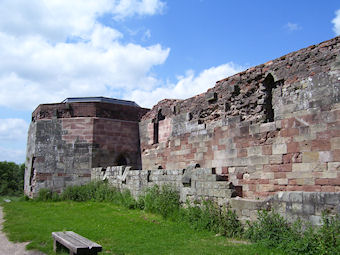
The 19th century construction however was not as solid as its 14th century predecessor, and during the 20th century Stafford Castle fell into disrepair. For a short time during the late 1940s, the castle caretakers ran a small tea room for visitors. Tragically during the 1950s a young boy died as a result of vandalism to the front quarter. The local authority called in the army during the 1960s to make the castle safe, they demolished the front towers, leaving us with the single story towers we see today.
During the 1980s local schools and other community organisations were drafted in to plant a dense wood around the grounds of the once open site.
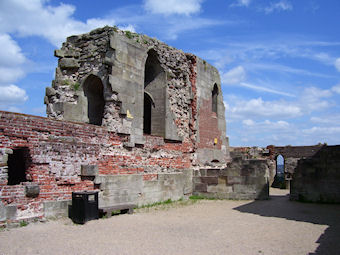
The woods drastically altered the views to and from the castle. It's now quite difficult to see the scale of the earthworks, especially the lower levels which extended through to the field which contains the current temporary car park.
The visitor centre is a gem, interactive guides, displays, souvenirs and gifts are available. Books and leaflets about the castle and Stafford are available along with basic refreshments. Outside the visitor centre is the well attended replica Medieval Herb Garden.

(Written July 2009)

